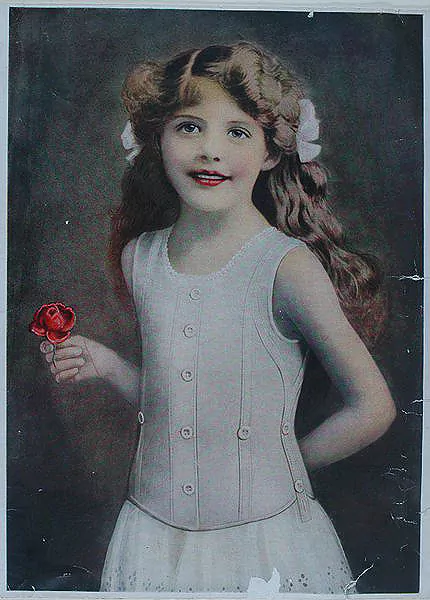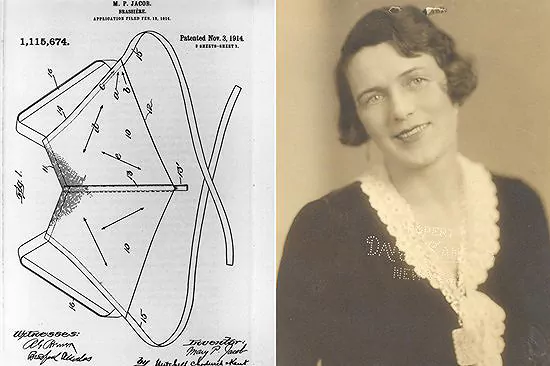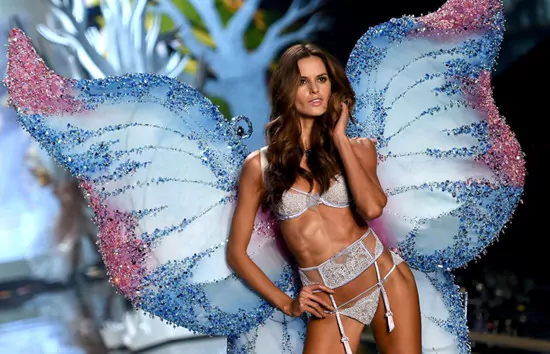Table of Contents
In the realm of undergarments, the invisible bra stands as a testament to the relentless pursuit of comfort and style. Its origin can be traced back to the early 20th century, a time marked by societal shifts and evolving fashion trends. Women were breaking free from the constraints of traditional clothing, seeking garments that allowed for greater freedom of movement. However, conventional bras, with their rigid structures and visible seams, didn’t align with the changing landscape of women’s fashion.
Tight Corsets
In the 16th century, tight corsets began to make their appearance. However, during that era, corsets were worn over clothing and were not designed to accentuate curves. Instead, they served the purpose of waist cinching and providing support to the bust. It wasn’t until the Victorian era that the trend of tightly cinched waists and compressed busts became prevalent. During this period, the small waist was considered a symbol of beauty, leading to the popularity of corsets crafted with materials such as whalebone, steel wires, and rattan. These corsets, designed to create an hourglass figure, unfortunately, subjected many young women to discomfort, and in some cases, even fainting spells.

On the left is the original corset, and on the right is the waist-cinching corset.
At the end of the 19th century, the women’s rights movement gained momentum in Europe and North America, with women advocating for equal social standing. Lingerie designers, responding to this shift, finally eased the constraints of corsets by introducing new, flexible support materials that allowed for relative warmth and looseness. After centuries of torment, girls could finally grow up in a healthier manner.

The Revolutionary Loose-Fit Brassiere, 1908
Subsequently, in the late 1910s, the tight corset gradually gave way to the bra. The women’s rights movement had yielded progress in sports for women, resulting in an increase in female athletes. Due to their enthusiasm for activities like cycling and tennis, as well as the high demand for metals during World War I, the restrictive corsets with metal frames that hindered movement were abandoned.
However, in the late 1940s and early 1950s, the tight corset made a comeback. Unlike before, the revamped tight corset of this era did away with metal frames, featured bras, waist cinchers, and some even incorporated sexy stockings. During this period, the tight corset had evolved to resemble something much closer to what we recognize as modern lingerie today.

Corset from the 1930s & modern corset
While no longer mainstream, tight corsets continue to thrive in certain subcultures such as the erotic or gothic subcultures. Women may still harbor prejudices against tight corsets, albeit less prevalent, stemming from its association with these cultures. The sexual liberation movement of the 60s and 70s played a crucial role in breaking the stigma surrounding tight corsets, liberating women from the impression of it being a “fetishistic” garment.
From the 80s onwards, tight corsets experienced a revival, receiving a second life thanks to designers like Vivienne Westwood who incorporated them into mainstream fashion by promoting the concept of wearing them externally. Icons like Madonna, who frequently wore tight corsets on stage, left a lasting impression. Today, seeing celebrities like Rihanna and Lady Gaga performing in tight corsets no longer surprises us, showcasing how this garment has transitioned from a symbol of constraint to a fashion statement.

The tight-fitting corset worn by Madonna during her 1990 concert, designed by Jean Paul Gaultier.
Beyond stage costumes, many high-end custom garments, such as evening gowns and wedding dresses, now incorporate tight corset designs. From initially being a symbol of gender inequality and burdened with erotic connotations, tight corsets have successfully traversed societal barriers and seamlessly entered the realm of high fashion. Today, they are embraced as integral elements in the design of sophisticated and glamorous attire, representing a transformation from a controversial garment to a widely accepted and integrated fashion statement.
Bra: Celebrating Curves and Sexy Fashion
As for the bra successfully replacing the tight corset, it was first crafted by New York socialite Mary Phelps Jacob in 1913 using two handkerchiefs and ribbons. In 1914, she patented her bra design and began marketing it (yes, this year marks the 100th anniversary of the modern bra). After the end of World War I, avant-garde women in Europe and North America were already embracing the bra, and the trend soon spread to Asia, Africa, Latin America, and beyond, gaining widespread acceptance.

The bra patented by Mary Phelps Jacob, also known as Caresse Crosby.
In the 1920s, following periods of political upheaval and the women’s rights movement, a segment of young women known as “Flappers” emerged. These women, inspired by societal shifts, cut their hair short, donned short skirts, listened to jazz music, and openly expressed disdain for societal norms. Fashioned after the “Flapper” spirit, designers like Gabrielle Chanel drew inspiration from their rebellious style. The Flappers sought a flat-chested look, considering women with larger busts to be immature, and preferred undergarments that didn’t emphasize body curves.

The flappers of the 1920s favored simple undergarments that did not emphasize body curves.
In the 1930s, the American lingerie company MAIDEN FORM pioneered the categorization of bras into different cup sizes. With an increasing number of women entering the workforce during this period, participating in activities such as joining the military or working in factories during World War II, bras were designed specifically for them. These bras were tailored to withstand strenuous activities while providing protection for the bust.
By the 1940s and 1950s, ordinary bras were no longer sufficient to meet the diverse preferences of women. This era witnessed the popularity of conical bras, resembling bullet or torpedo shapes, as they became a fashion trend.

The conical bras that were popular in the 1950s were designed and introduced by the lingerie company MAIDEN FORM
In the 1950s and 1960s, the variety of bras expanded significantly in terms of types, styles, and patterns. In the 1960s, lingerie manufacturers introduced padded bras and underwire bras. Padded bras enhanced the appearance of fuller breasts, while underwire bras provided better support, preventing deformation. However, women of that time found wearing underwire bras to be “quite uncomfortable.” The first sports bras made their appearance in the 1970s.
From the 1980s onwards, as women began to assert their self-worth and female beauty gained widespread acceptance, there was a significant surge in lingerie consumption. Women’s pursuit of lingerie beauty became more straightforward and open, leading to bolder lingerie designs, and advertisements began emphasizing sexiness and fashion. Victoria’s Secret, founded in 1977, rapidly became the largest lingerie brand in the United States in the early 1990s. Its regular lingerie fashion shows, starting in 1995, have since become a major event in the fashion industry.

At the 2014 Victoria's Secret Fashion Show, models are showcasing a set of lace lingerie.
Women don't necessarily have a universal love for lingerie
While some women don’t mind exposing their bras (some even consider it a fashion statement), for those who enjoy wearing off-shoulder evening dresses, the two straps affecting the aesthetics can be quite a headache. Stapless bras emerged in the late 1930s but didn’t gain widespread popularity at the time. It wasn’t until the 1950s, with the rise of off-shoulder evening dresses, that women started to widely adopt strapless bras. Data indicates that in 2006, the average American woman owned six bras, with at least one being a strapless bra.
However, with the emergence of backless evening dresses, conventional strapless bras no longer met women’s needs. In 2002, Bragel introduced the invisible bra, typically made of two silicone gel pieces with a front clasp (among other materials), designed to match the skin tone and adhere directly to the body. Nowadays, many female celebrities walking the red carpet in low-cut and backless outfits rely on this magical garment.

Invisible Bra
To be honest, not all women enjoy wearing bras. An increasing number of celebrities are choosing to go “braless” when stepping out, even for important events such as award ceremonies and red carpet appearances. There are now even two “No Bra Days” (on July 9th and October 13th), encouraging women to go without a bra on those days. These “No Bra Days” first appeared on Facebook in 2011 as an initiative to raise awareness about breast cancer, and they have since gained participation in multiple countries.

In 2014, Kim Kardashian and her husband Kanye West, it's noticeable that she is not wearing a bra
The choice of not wearing a bra, aside from concerns about its potential impact on the breasts, is also a symbol and expression of women’s autonomy. This attitude has historical roots. In the 1960s, during the rise of the feminist movement, Danish fashion historian Rudolf Kristian Albert Broby-Johansen believed that going braless and freeing the breasts was a way for the new generation of women to express themselves.
In 1968, feminist activists protested against the Miss America beauty pageant, arguing that women should not be judged and scored like objects. As a symbolic gesture, they threw items considered demeaning to women’s bodies, such as high heels, cosmetics, and bras, into trash cans. While the actual number of women who embraced going braless at that time is hard to determine, this movement at least contributed to a shift in women’s attitudes toward bras in the 1970s. Women began to seek simplicity and comfort, moving away from overly adorned styles. Even today, going braless is still seen by some as a manifestation of feminist expression.

In the 1968 'Miss America' protest scene, a woman is seen tossing feminine products into a trash can symbolizing freedom.
However, occasionally going braless can make people feel awkward. In a state banquet in 2010, former French First Lady Carla Bruni chose not to wear a bra, and the faintly visible nipples under her turquoise evening gown were deemed inappropriate and impacted the overall aesthetics.
What’s a good solution to address such situations? Well, nipple covers, applied directly to the nipples, can be a viable option. Not only do they prevent awkwardness or excessive exposure, but they also come in various materials, shapes, and patterns, adding a fashionable touch. Nowadays, even actresses occasionally use nipple covers when filming scenes with sensual content. However, nipple covers are not a recent invention; they first appeared in the 1920s and were primarily used by striptease dancers to avoid excessive exposure and comply with relevant laws and regulations.

In 2013, Lady Gaga was spotted on the streets of Paris without wearing a bra, opting instead for nipple covers.